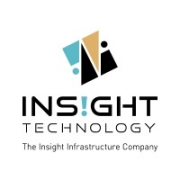Database Security is crucial for protecting sensitive data from unauthorized access. It involves measures to safeguard data integrity, confidentiality, and availability. Professionals prioritize security protocols and encryption techniques to manage threats effectively.
Implementing solid Database Security solutions is essential for businesses to protect intellectual property and personal data. Leveraging real-time monitoring, when combined with robust authentication methods, enhances overall security posture. Users find value in customizable alert systems and detailed logging to identify potential threats swiftly. The integration of advanced encryption in Database Security solutions ensures data protection even in the event of a breach as it secures information both in transit and at rest.
What are the critical features of database security solutions?In financial services, Database Security solutions are critical to safeguard valuable data and maintain customer trust. Healthcare utilizes these solutions to ensure patient confidentiality, complying with stringent regulations. E-commerce sectors focus on preventing data leakage and fraud, protecting consumer information and transactions.
Database Security solutions provide organizations with the necessary tools to safeguard crucial information against evolving cyber threats. By prioritizing Database Security, companies protect their reputation, ensure operational continuity, and maintain trust with clients and stakeholders.
| Product | Market Share (%) |
|---|---|
| IBM Security Guardium Data Protection | 26.4% |
| Imperva Data Security Fabric | 25.0% |
| Oracle Audit Vault | 12.1% |
| Other | 36.5% |




























Securing databases is critical to prevent data breaches. A data breach can affect your organization in several ways:
Database security defends your data against a compromise that can have disastrous effects on your organization. When you implement database security tools and practices it protects your organization against:
Database security tools provide specific protection for databases. There are specialized tools to protect databases in the cloud, on premises or in hybrid environments. Proper database security is required to ensure compliance with data regulations.
Some common methods for securing databases include:
Data breaches can be catastrophic for organizations, especially in regulated industries where you need to keep your data under strict compliance rules. Attacks can come in many forms, and it is best to be prepared for any type of attack, be it physical or digital. Let’s review some practices to keep your database secure.
1. Use a database proxy.
A database proxy is a gateway residing between your applications and the database. The proxy filters and then accepts or blocks connection requests from applications. After accepting the request from the application, it connects with the database on its behalf. This enables the proxy to protect the database from unauthorized requests.
2. Have physical database security in place.
Don’t think that criminals will only attack your database by digital means. If a cybercriminal gets physical access to your database server, they can cause serious harm by stealing the data, corrupting it, or inserting harmful malware. So, when choosing a data center or a web hosting service, make sure your company has physical security measures in place to protect the servers.
3. Keep data separated.
Data requires specific security measures to keep it safe from attacks. One of these is keeping it separated from other workloads to prevent attackers from gaining access to your data. Let’s say you have an e-commerce website and keep your site data and sensitive transactional data all on the same server. If an attacker breaches your server, they may easily access and steal or corrupt your data.
4. Use real-time database monitoring.
Actively scanning your database for breach attempts boosts your chances of catching an attack before it becomes a serious problem. Database security solutions usually come with proactive monitoring.
5. Don’t use default network ports.
Cybercriminals often use default ports in brute force attacks because they are easily accessible. If you are not using the default port, the attacker needs to try a different one, which may stall them or discourage them.
6. Encrypt all the data everywhere.
Encrypting the data is not only useful to keep it safe from prying eyes. You need also to ensure that no unauthorized user can read your data while it is in transit or at rest. Strong encryption protocols ensure the data is scrambled at all times, which prevents cybercriminals from reading it if they get hold of it.
7. Use database and web application firewalls.
A firewall is the first line of defense against malicious attacks. Deploying a firewall around your database can help you keep your data secure. There are three main types of firewalls used to protect a database:
8. Keep user access limited.
Most data breaches are caused by compromised passwords. Employ strong authentication processes like multi-factor authentication. Also, consider using a role access control function. It is critical that you manage identity and access permissions and privileges.
Some tips that may help:
Maintaining database security requires keeping multiple security controls. Let’s explore key features that you should look for in database security:
Encryption transforms data into a secure format that is unreadable to unauthorized users. By encrypting sensitive information both at rest and in transit, you ensure that even if data is intercepted, it remains protected. Implementing strong encryption protocols and regularly updating encryption keys are crucial steps in safeguarding your databases. This enhances data confidentiality and compliance with regulations.
What role does database auditing play in Database Security?Database auditing involves tracking and logging database activities to monitor access, changes, and anomalies. By implementing an effective auditing process, you can detect unauthorized access attempts, data manipulations, and potential security breaches. Regular auditing helps in maintaining data integrity and can be key in forensic analysis if a security incident occurs. It is essential for compliance with data protection laws.
Why is access control critical for Database Security?Access control defines who can access and manipulate database resources by setting permissions and restrictions. By ensuring only authorized users have access to sensitive data, you minimize the risk of data breaches. Implementing strong authentication methods, such as multi-factor authentication, and regularly updating user access rights help in preventing unauthorized access and enhancing database protection.
How do firewalls contribute to securing databases?Firewalls act as a barrier between your database servers and potential threats from external networks. They filter incoming and outgoing traffic based on predefined security rules, which can block malicious data packets from reaching your databases. By regularly updating firewall rules and settings, you can prevent unauthorized access attempts and safeguard your databases from potential threats.
What are the benefits of database patch management?Database patch management involves regularly applying updates and patches released by software vendors to address security vulnerabilities. By keeping your database systems up to date, you protect them from known exploits and improve overall security. Patch management reduces the risk of cyberattacks and ensures that your database systems function optimally and securely.